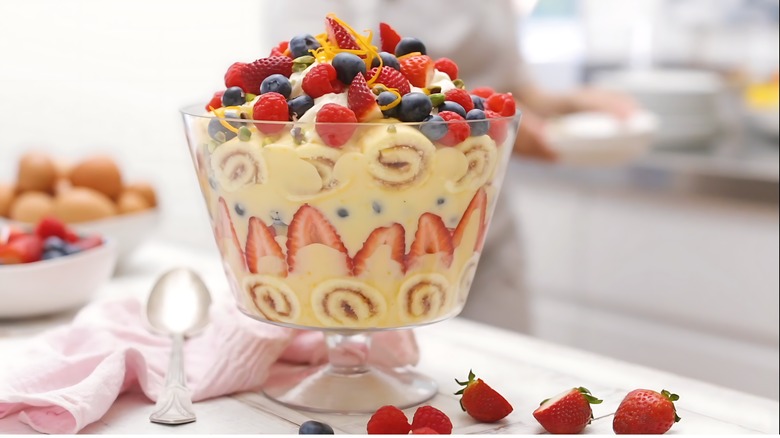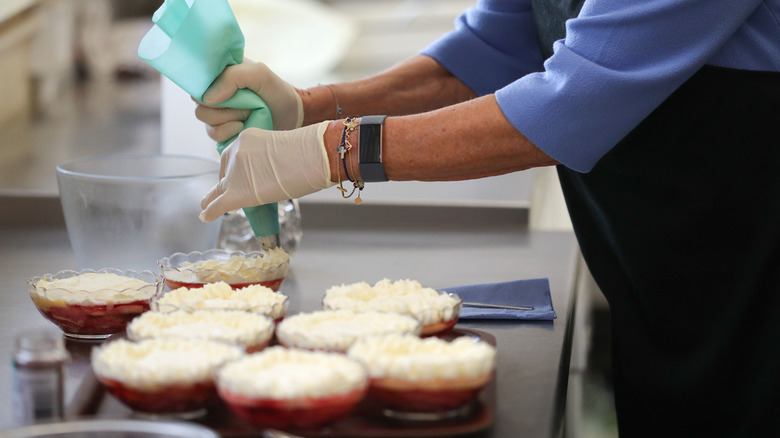The Layering Tip That Will Take Your Trifle To New Heights
Originating in 18th century England, the trifle is a decadent dessert that is impressive in both taste and appearance. Today, the dessert is well loved as a tried and true classic in the U.K., and has found its place in the heart of Southern cooking in the United States as a decorative centerpiece at the end of a meal. The dessert combines cake, fruit, custard, and sometimes jelly, which is layered repeatedly and topped with cream, fruit, or nuts.
The dessert's name, which means "something of little importance," effectively describes how easy it is to make a trifle — Paul Hollywood suggests that beginners make it. Typically, a trifle is made by creating a base layer of cake pieces soaked with alcohol, then adding a layer of fruit, followed by a layer of custard, and so on. However, the rules are not rigid when it comes to making trifles. Switching the order of layers so that the base layer is cream instead of cake can make a trifle even easier to assemble and puts a fun spin on the classic appearance of a trifle.
The best part about making a trifle is how customizable the dessert is. Flavors can vary from plain cream and strawberries to cherry and pistachio; as such, the layering for this dessert is equally customizable. At the end of the day, regardless of if the first layer is cream or cake, all a trifle needs to do is look pretty and taste lovely.
Start with cream
The low-effort way to layer a trifle is to begin with a creamy layer as a base, followed by a layer of cake, then a layer of fruit and syrup. These steps should be repeated until the trifle bowl is full or the desired height is reached. To complete the layering process, be sure to end with a layer of cream to keep the layers saucy and flavorful. Once the layers are complete, a trifle should be topped with whipped cream and any desired toppings, such as fruit pieces, nuts, or syrup.
One of the reasons why a cream base is convenient is that the cream can just be scooped right into the bowl. Using cake pieces as the base layer requires cutting or crumbling the cake into pieces that will fit into the bowl. The pieces not only have to fit into the bowl, but they also need to be similar in height to keep the layers looking neat. Using a cream base removes this complication entirely; once the cream layer is added, it can simply be smoothed out, and the base layer is done.

